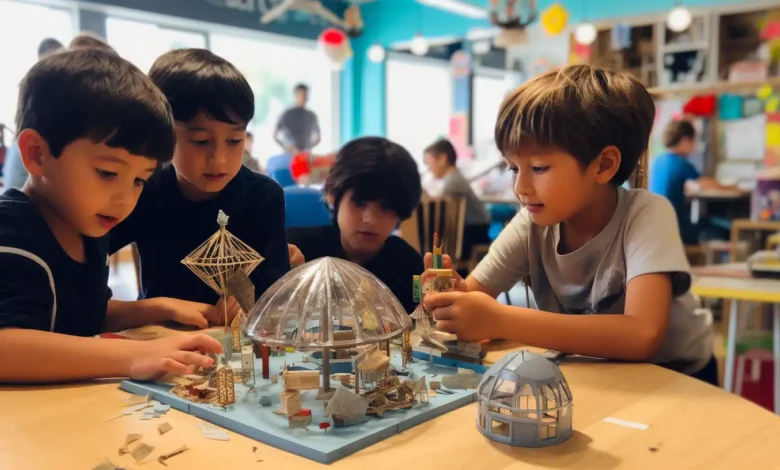Unleashing Creativity: A Guide to Invention Ideas

30+ Genius Invention Ideas for Students to Boost Their Creativity
- Cloud in a Jar. …
- Hand Washing Science Experiment. …
- Robot Building. …
- DIY Weather Station. …
- 3D Aluminum Car Model. …
- DIY Wooden Jenga Blocks. …
- DIY Tangrams. …
- Jellybean Building.
Introduction
Inventions have the power to transform lives, drive progress, and solve some of the world’s most pressing problems. Whether you’re an aspiring inventor or simply someone with a knack for creative thinking, coming up with novel invention ideas can be both exciting and challenging. This guide will explore various aspects of the invention process, provide inspiration for potential invention ideas, and offer tips on how to bring your concepts to life.
The Importance of Inventions
Historical Impact
Throughout history, inventions have played a crucial role in shaping society. From the wheel and the printing press to the internet and smartphones, groundbreaking inventions have revolutionized how we live, work, and interact with the world.
Driving Innovation
Inventions drive innovation by pushing the boundaries of what is possible. They inspire new technologies, create industries, and improve quality of life. Innovation often stems from identifying a problem and devising a novel solution.
Generating Invention Ideas
Identify Problems
One of the best ways to generate invention ideas is to identify problems or inefficiencies in everyday life. Ask yourself:
- What tasks are time-consuming or cumbersome?
- What common frustrations do people face?
- How could existing products be improved?
Brainstorming Techniques
Several brainstorming techniques can help spark invention ideas:
- Mind Mapping: Create a visual map of related ideas branching out from a central concept.
- SCAMPER: This technique involves asking questions about an existing product or process to improve it. SCAMPER stands for Substitute, Combine, Adapt, Modify, Put to another use, Eliminate, and Reverse.
- Reverse Engineering: Analyze existing products to understand their components and functions, then think about how they could be improved or used differently.
Collaboration and Feedback
Collaborating with others can provide new perspectives and insights. Share your ideas with friends, family, or colleagues and seek their feedback. Participating in invention workshops or joining inventor communities can also be beneficial.
Categories of Invention Ideas
Everyday Gadgets
Inventions that simplify daily tasks or address common problems can have a broad appeal. Examples include:
- Multi-functional Kitchen Tools: Gadgets that combine multiple functions, such as a knife with a built-in grater.
- Smart Home Devices: Innovations that automate or enhance household functions, like smart thermostats or robotic cleaners.
Health and Wellness
Health and wellness inventions can improve quality of life and address medical needs. Examples include:
- Portable Health Monitors: Devices that allow individuals to monitor vital signs, such as heart rate or blood glucose levels, on the go.
- Ergonomic Products: Innovations designed to reduce strain and improve comfort, like ergonomic office furniture or posture-correcting wearables.
Environmental Solutions
Inventions that address environmental challenges are increasingly important. Examples include:
- Renewable Energy Devices: Products that harness renewable energy sources, such as solar-powered chargers or wind turbines.
- Sustainable Materials: Innovations in materials science that reduce environmental impact, such as biodegradable plastics or recycled building materials.
Technology and Electronics
Technological advancements continue to drive new inventions. Examples include:
- Wearable Tech: Devices that integrate technology into clothing or accessories, like smartwatches or fitness trackers.
- Smart Gadgets: Innovations that connect to the internet and provide enhanced functionality, such as smart home assistants or IoT-enabled appliances.
Transportation
Inventions in transportation can improve efficiency, safety, and convenience. Examples include:
- Electric Vehicles: Cars, bikes, or scooters powered by electricity, reducing reliance on fossil fuels.
- Innovative Public Transit: Solutions that enhance public transportation systems, like on-demand shuttle services or bike-sharing programs.
Bringing Your Invention to Life
Research and Development
Once you have an invention idea, research is crucial. Determine if similar products already exist and understand the market landscape. Develop prototypes and test your invention to refine its design and functionality.
Protecting Your Idea
Protecting your invention through intellectual property (IP) is essential. Consider filing for a patent, which grants exclusive rights to your invention. Trademarks and copyrights can also protect branding and creative works associated with your invention.
Funding and Resources
Securing funding is often necessary to bring an invention to market. Explore various funding options, including:
- Crowdfunding: Platforms like Kickstarter or Indiegogo allow you to raise funds from a large audience.
- Grants and Competitions: Many organizations offer grants or hold competitions for innovative ideas.
- Investors: Seek out angel investors or venture capitalists who are interested in supporting new inventions.
Marketing and Launch
Effective marketing is crucial for the success of your invention. Develop a marketing strategy that highlights the unique benefits of your product. Utilize social media, online advertising, and public relations to generate interest and attract customers. Consider launching your product through an e-commerce platform or partnering with retailers.
Conclusion
Invention ideas have the potential to change the world, solve problems, and improve lives. By identifying problems, brainstorming creatively, and collaborating with others, you can generate innovative ideas. Bringing an invention to life involves research, protection, funding, and effective marketing. Whether you’re aiming to create the next groundbreaking technology or a simple yet impactful gadget, the journey of invention is both challenging and rewarding.
FAQs
1. How do I come up with an invention idea?
Start by identifying everyday problems or inefficiencies. Use brainstorming techniques like mind mapping and SCAMPER, and collaborate with others for new perspectives.
2. How can I protect my invention?
Consider filing for a patent to protect your invention. Trademarks and copyrights can also protect branding and creative works associated with your product.
3. What are some categories of invention ideas?
Invention ideas can fall into various categories, including everyday gadgets, health and wellness, environmental solutions, technology and electronics, and transportation.
4. How can I fund my Invention Ideas?
Explore crowdfunding platforms, apply for grants or competitions, and seek out investors who are interested in supporting new inventions.
5. What is the importance of marketing for an Invention Ideas?
Effective marketing is crucial to generate interest and attract customers. Develop a strategy that highlights the unique benefits of your product and utilize various marketing channels to reach your target audience.



